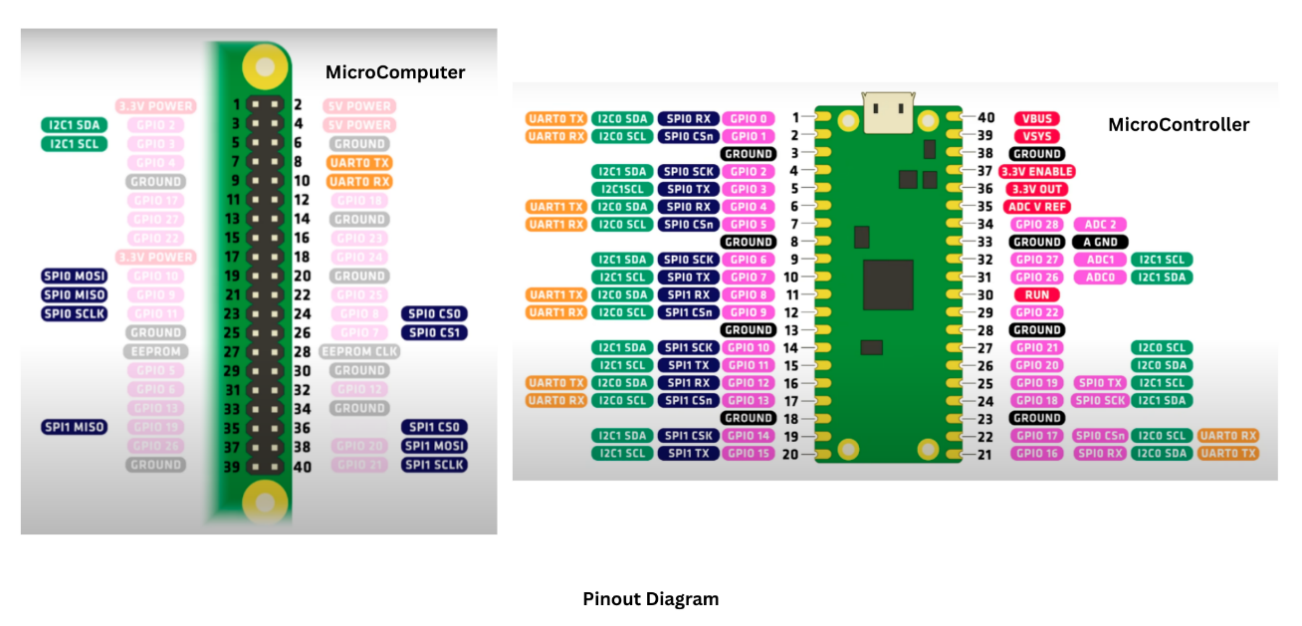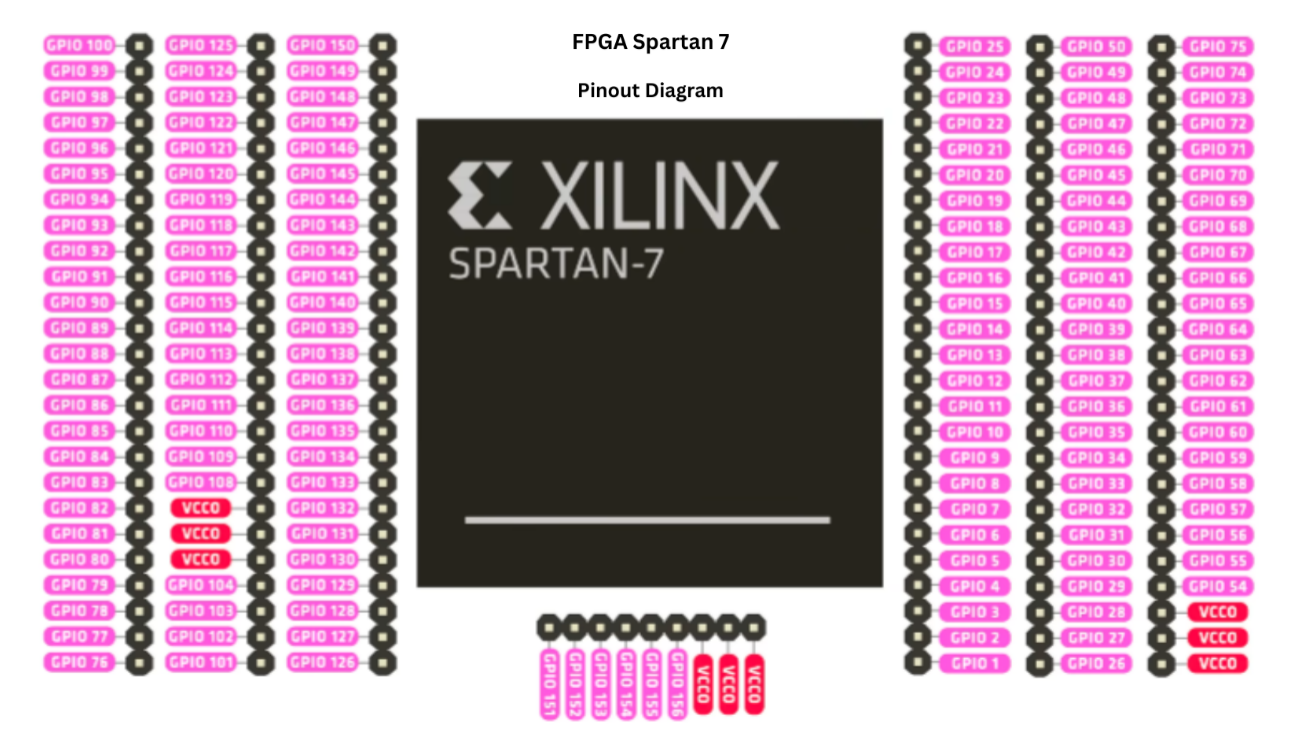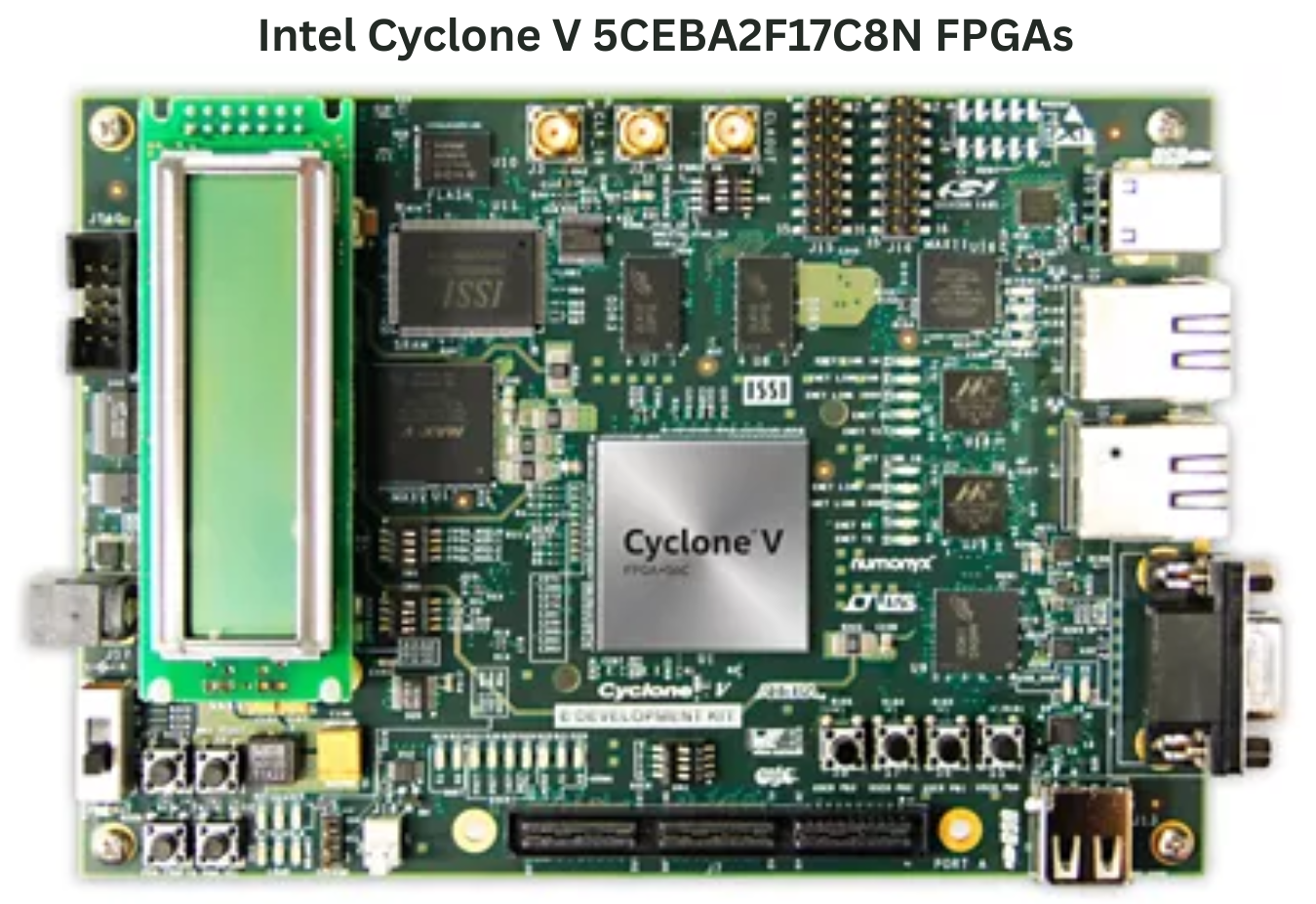Brief Introduction
Those who know the importance of processing technology, whether a microcomputer, microcontroller, or FPGAs, cannot deny its core differences and adaptability. It lets us understand that the most sophisticated FPGAs have been provided in dense computational and real-time environments. FPGAs are adaptable and reprogrammable after deployment, which is the most unique feature, and they have engaged industries to adapt according to their needs.


Two processing architecture technologies, Xilinx Spartan-7 and Intel Cyclone V, can be compared within midrange-level FPGAs. These unique products are from reputable, pioneering, and competitive companies. Xilinx has recently been acquired by AMD, and Intel is popular for microcomputer processing technology. Let us find out more.
Xilinx Spartan-7 XC7S15-1CPGA 196C FPGAs
Regarding FPGAs, Xilinx is the inventor and leader of FPGAs, the most dynamic processing technology in the industry. These technologies help meet highly complex computational and adaptable needs. The crown feature of Xilinx Spartan-7 is its cost-effective design, which is dominant for a broad range of I/O connectivity.

Specifications
The Spartan-7 features a cost-optimized portfolio that offers top performance per watt. It is equipped with MicroBlaze soft processor technology that runs over 200 DMIPs and is supported by 800 Mb/s DDR3, which is built on 28nm technology. Further specifications are explained in the table below.
|
Xilinx Spartan-7 XC7S15-1CPGA 196C FPGAs |
||
|
Resources |
Device Name |
Details |
|
Logic Resources |
Logic Cells |
12800 |
|
Slices |
2000 |
|
|
CLB Flip-Flops |
16000 |
|
|
Memory Resources |
Maximum Distributed RAM (KB) |
150 |
|
BLOCK RAM / FIFO w / ECC (36 Kb each) |
10 |
|
|
Total Block RAM (Kb) |
360 |
|
|
Clock Resources |
Clock Management Tiles (1 MMCM 1 PLL) |
2 |
|
I / O Resources |
Max Single - Ended I / O Pins |
100 |
|
Max Differential I / O Pairs |
48 |
|
|
Embedded Hard IP Resources |
DSP Slices |
20 |
|
Analog Mixed Signal (AMS) / XADC |
0 |
|
|
Configurations AES / HMAC Blocks |
0 |
|
|
Speed Grades |
Commercial Temp (C) |
-1, -2 |
|
Industrial Temp (I) |
-1, -2, --1L |
|
|
Expanded Temp (Q) |
-1 |
|
|
Package Details CPGA 196 |
Body Area (8x8) mm - Ball Pitch 0.5 mm |
100 |
Features
While discussing the AMD / Xilinx Spartan-7 family, we know that FPGAs work for complex logical environments; therefore, choosing the correct device is essential. The Spartan-7 family provides analogue-to-digital converters and dedicated security features. With a (-40 °C to 125 °C) Q-grade temperature on all commercial devices, the device's essential applications are significant.
1. Programmable / Reprogrammable Integrated System
Spartan-7 has a high pins-to-logic ratio for Input / Output connectivity. With the MicroBlaze processor, processing speed has an edge over competitors. The 32/64-bit processor architecture signifies separate instruction and memory data spaces. To secure all reprogrammable resources, Spartan-7 provides extended security and monitoring features.
2. Performance Enhancements
Xilinx is the inventor of FPGAs and provides 30% faster processing performance. Family variations have up to 1.25 Gbps Low-Voltage Differential Signaling (LVDS). With such LVDS, data transmission is high-speed, reducing noise, low power consumption, and ultimately enhancing performance. Such high-speed data transmission is common in the automotive industry, video exhibits, and boosts interconnectivity between integrated circuits.
3. Reduced Power Consumption
Xilinx Spartan-7 is equipped with 1.0-volt or 0.95-volt core options. The choice for the upgraded system remains with the user for specific CPU performance, but 1.0V or 0.95V shows efficiency in energy consumption, lesser heat output, and high clock speeds. The Spartan-7 family exhibits a higher reduction in power consumption than 45nm generation devices.
4. Productivity with Design Accelerations
The Xilinx Spartan-7 family is enabled with Vivado© HLx Design Suite WebPack edition. The design is accelerated to utilize Vivado's capacities to perform productivity in tasks such as designing, manufacturing, and applications. The integration of Vivado also enables design flow to facilitate correction by construction, which provides a graphical and TCL-based environment to minimize errors and speed development processing. Xilinx Spartan-7 offers scalable architecture, IP reuse, and comprehensive tools that help accelerate and reprogram the FPGA.
Intel Cyclone V 5CEBA2F17C8N FPGAs
Intel's powerful FPGA belongs to the Cyclone VE family and competes with Xilinx Spartan-7. Intel Cyclone previously belonged to Altera but is now Intel's technology. Cyclone V devices instantaneously shrink cost and power consumption requirements. The device is boosted with incorporated transceivers and hard memory controllers. Further specifications are explained below.

Specifications
|
Intel Cyclone V 5CEBA2F17C8N FPGAs |
||
|
Resources |
Device Name |
Details |
|
Logic Elements |
Number of Logic Elements (LE) |
25000 |
|
Adaptive Logic Modules (ALM) |
9430 |
|
|
Register |
|
37736 |
|
Embedded Block RAM – EBR |
EBR (Kb) |
196 |
|
GPIO |
Number of GPIO (I / O) |
128 |
|
Memory (Kb) |
M10K |
1760 |
|
MLAB |
196 |
|
|
Variable Precision DSP Block |
|
25 |
|
LVDS |
Transmitter |
56 |
|
Receiver |
56 |
|
|
Hard Memory Controller |
|
1 |
|
Voltage |
Maximum Supply |
1.1V |
|
Collector Emitter Saturation |
1.1V |
|
|
Temperature (°C) |
Minimum |
0 |
|
Maximum |
85 |
|
|
Frequency |
Maximum Operating (MHz) |
925 |
Features
Altera previously designed the Intel Cyclone, which is suitable for a wide range of highly sensitive applications. Some of the significant features include;
1. Architecture Performance
Intel Cyclone V combines low power, low cost, and high functionality. This architecture comprises 25000 Logical Elements (LE) and 9430 Adaptive Logical Modules (ALMs), with the Memory combination of M10k being 1760 and MLAB 196. These resources are interconnected with a very flexible clock network and power optimization of Intel's (Previously Altera) high-grade MultiTrack routing architecture.
5. Flexibility and Adaptability
Intel Cyclone V has a unique, flexible, adaptable fabrication and interface support with transmitters and receivers. The logical core is surrounded by Input / Output elements and Phase-Locked Loops (PLLs). The Input / Output is supported by a 925 MHz LVD operating system with a 1.1 voltage and low power consumption efficiency.
6. Multi-Function Support
Intel Cyclone V also supports multi-functionality, which allows up to eight peripherals to share the same PCIe link with control and status registers (CSRs) and an individual memory map. This Multi-port controller mediates up to six different masters to maximize the DRAM link efficiency. Cyclone V FPGAs provide a comprehensive design protection including 256-bit Advanced Encryption Standard (AES), JTAG port protection, Internal Oscillator, and Cyclical Redundancy Check (CRC) features.
7. Configurable Logic Blocks (CLBs) and Adaptive Logic Modules (ALMs)
In the FPGA world, CLBs and ALMs are the core blocks for logical functioning. Xilinx Spartan-7 series uses CLBs with flip-flops, and Intel Cyclone V uses ALMs with LUTs. ALMs are more flexible and optimize architecture than CLBs. The actual significance of CLBs is the direct implementation of logical functions, whereas ALMs give flexibility and optimization in designs.
Comparison Table Between Xilinx Spartan-7 Versus Intel Cyclone V
|
Comparison of Xilinx Spartan-7 And Intel Cyclone V |
||
|
Architecture Features |
Xilinx Spartan-7 XC7S15-1CPGA 196C |
Intel Cyclone V 5CEBA2F17C8N |
|
Logic |
12800 Logic Cells |
25000 – 40000 LEs |
|
Logic Configuration |
CLBs |
ALMs |
|
Memory Block RAM |
360 Kb |
Up to 2000 KBs |
|
DSP |
20 |
Up to 80 |
|
Memory Interface |
DDR3 etc. |
DDR3 etc. |
|
Power Consumption |
Low |
Low |
|
Cost Optimization |
Optimized |
Optimized |
|
Development Tools |
Vivado HLx Design Suite |
Intel Quartus Prime |
|
Practical Applications |
Industrial, Consumer, General Purpose, Automotive, Medical |
Consumer, Cost Sensitive Industrial, General Purpose |
Conclusion
In FPGAs, both technologies compete on the same grounds. Intel acquired Altera for the Cyclone family, and AMD acquired the Xilinx Spartan family. These devices target low power consumption, low cost, and deep logical functioning for complex computational tasks. Both compete in almost the same industry application, but Intel Cyclone also works in a more cost-sensitive industry. The choice between both depends upon the project requirement for the application, but being the Inventor of FPGA Xilinx Spartan-7 takes the edge.
To discover high-quality electrical components and solutions to empower your business, visit JAK Electronics. For more information about Xilinx XC7S15-1CPGA196C online, please click here, and get more information about Intel 5CEBA2F17C8N, please click here.






